This post is also available in:  Deutsch (German)
Deutsch (German)
At 07:30 CAT we are on S19° 25.971′ E10° 56.032′, 190 km west of Möwe Bay.
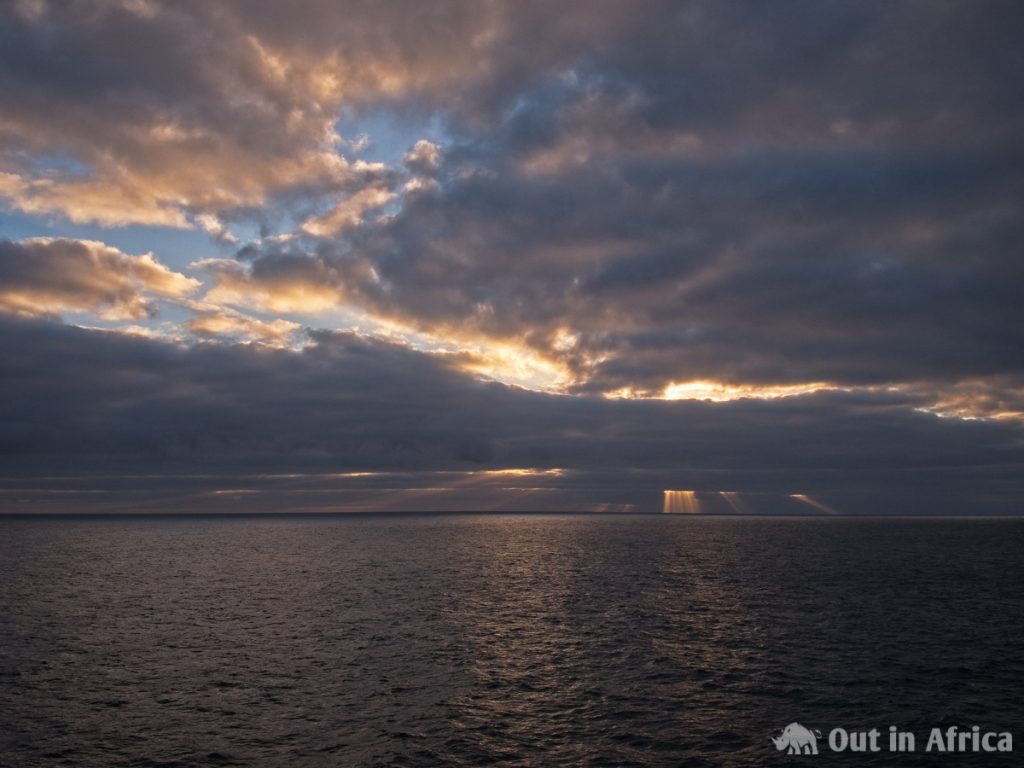
The sun is already up when I get up, but the view is nevertheless extraordinarily beautiful. Light rays fall through the clouds and throw silver spots on the ocean.
At breakfast, the captain tells me that he has already spotted a whale blow.
After the meal, I go to the bridge. A big white bird flies behind the ship. It’s an albatross.
Only which of the many candidates can it be? Everything depends on the colour of the bill. Unfortunately, it is too far away. Even with binoculars, I cannot determine it.
I want to go out and watch animals. But the captain also gave me a stick asking me to put the pictures I took of him and his wife yesterday on it. Could it perhaps wait until tomorrow? Tonight I can work on it more quietly.
I leave photos and go to the bow balcony. Pierre is already there.
“There’s a lot of flying fish!” he says.
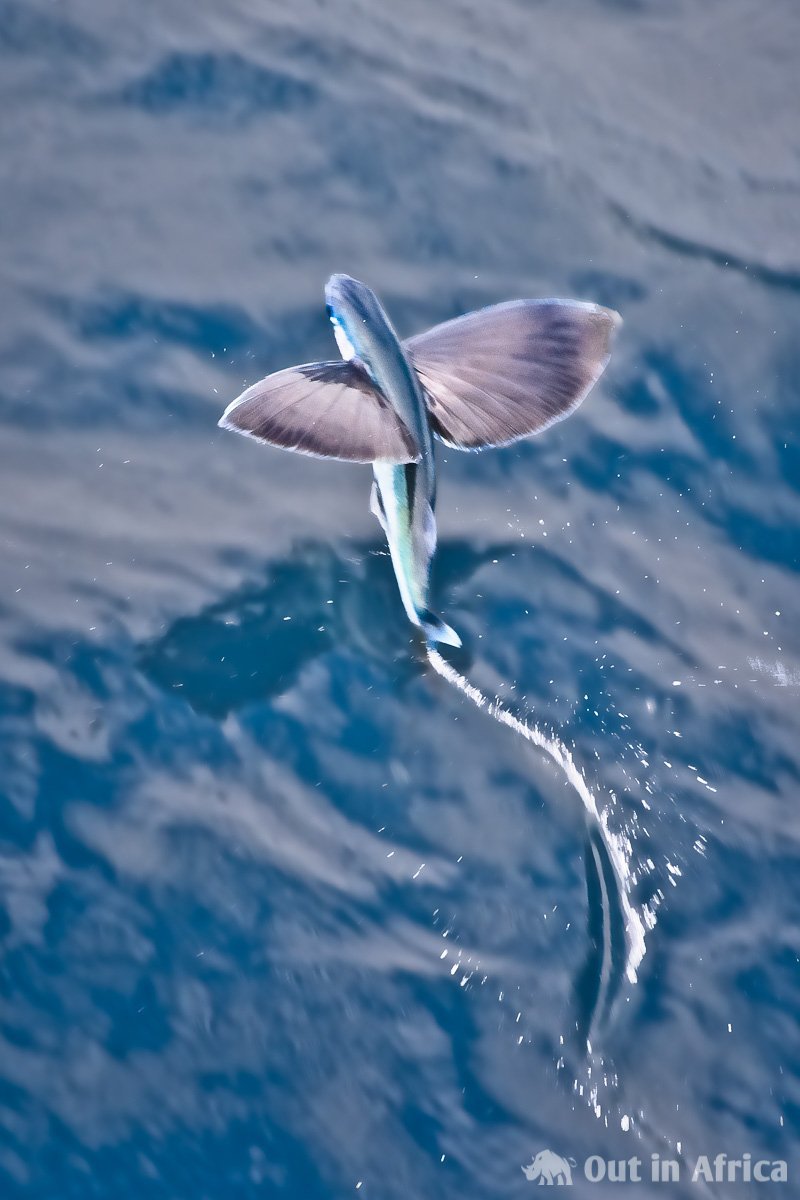
Indeed. I didn’t expect that. Again and again, they fly out of the water.
Often it is the white-winged ones from which I have already observed entire kindergartens. So here are the adults. They have left their babies in warmer waters.
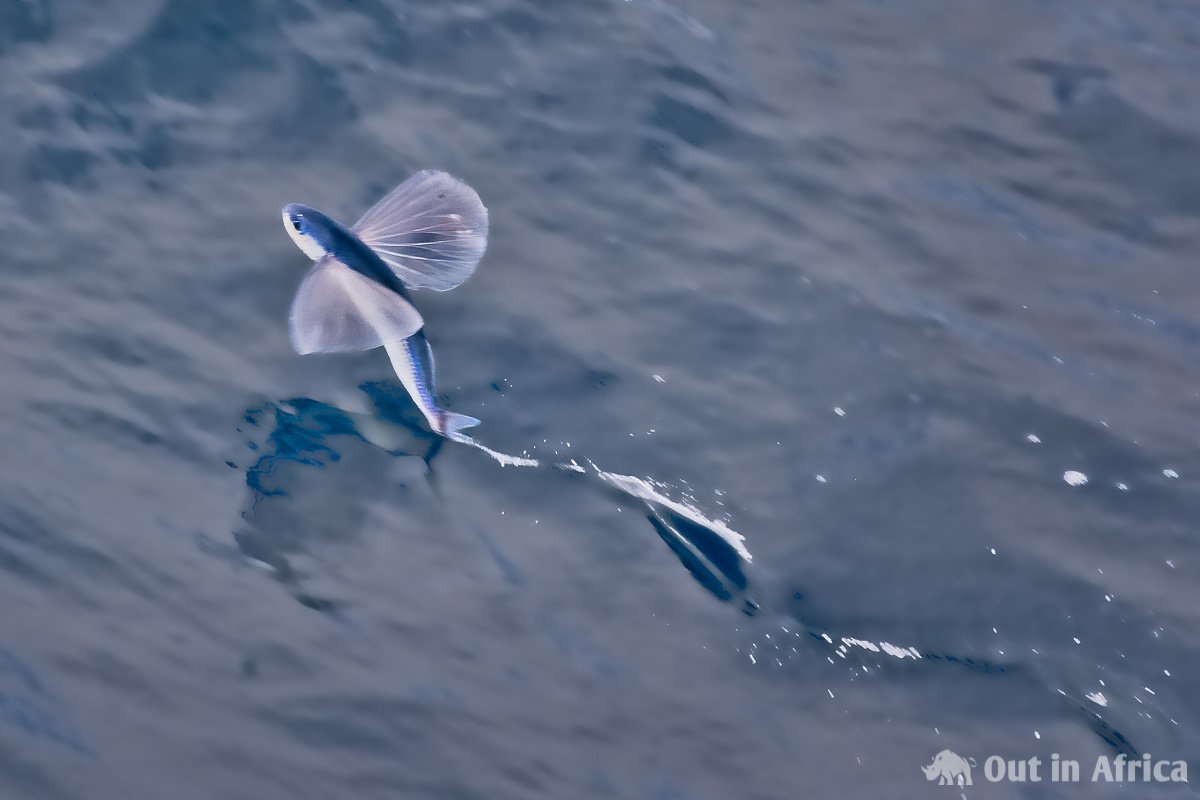
The white-winged flying fish are much too hectic. They manage five, ten metres at the most. This makes it very difficult to photograph them. They barely make it to the bow, and then they plop back into the water.
I’m busy. I stand at the front of the railing and try to take useful photos. When there are no flying fish, I look up and across the sea.
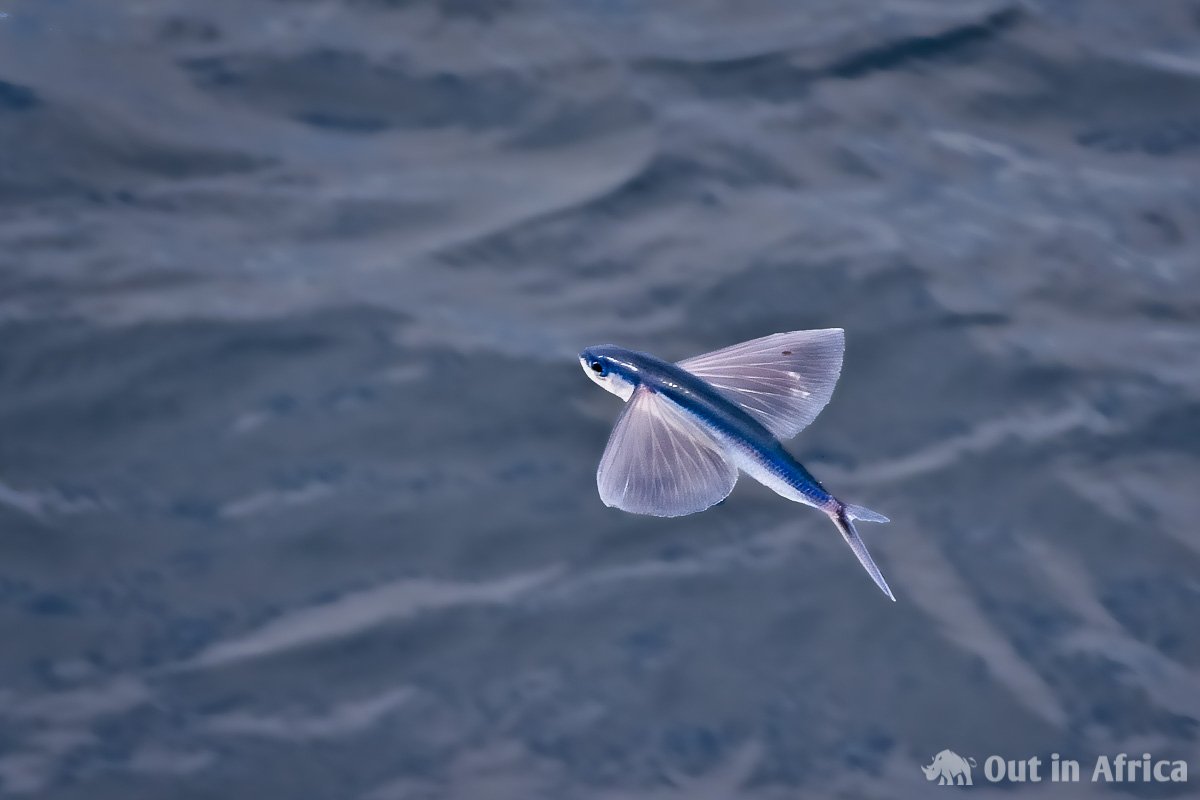
Today, as we get closer and closer to the Namibian coast, there are many more birds. Especially Cory’s Shearwater fly around. I succeed a few times to photograph them up to full format.
I stay at the bow all morning. It’s cool, but I have my windbreaker with me.
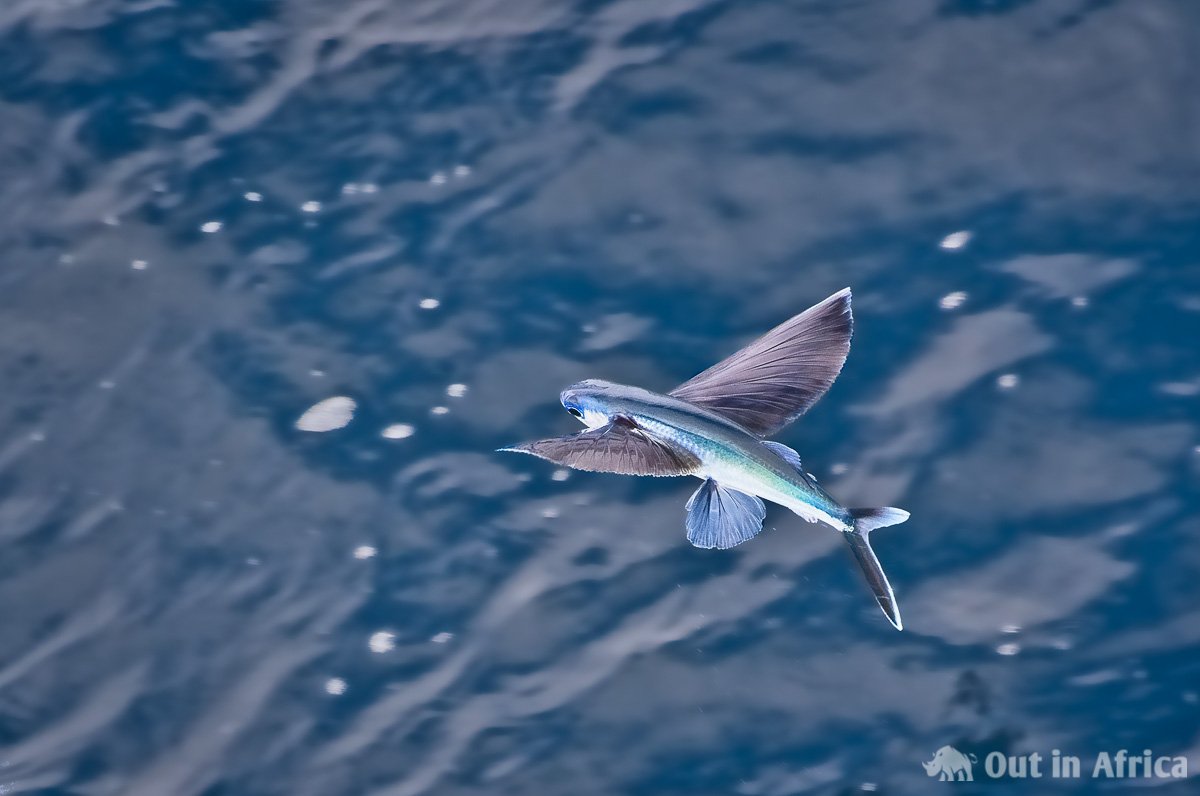
Often nothing happens. Then I drink the coffee I brought along from my thermo cup. I make an interesting observation. When I lift the cup to drink, something exciting happens. Either a swarm of stunning flying fish passes by, or a shearwater floats directly in front of the railing. Then I don’t have a hand free to photograph them. But if I put the cup down and have the camera in the right position, nothing happens.
Nothingness isn’t boring. I look over the waves and watch how the seascape is continually changing through the sun and clouds, shadows and reflections. The ocean is not flat, or at least it doesn’t look flat. The light gives me an illusion of ups and downs.
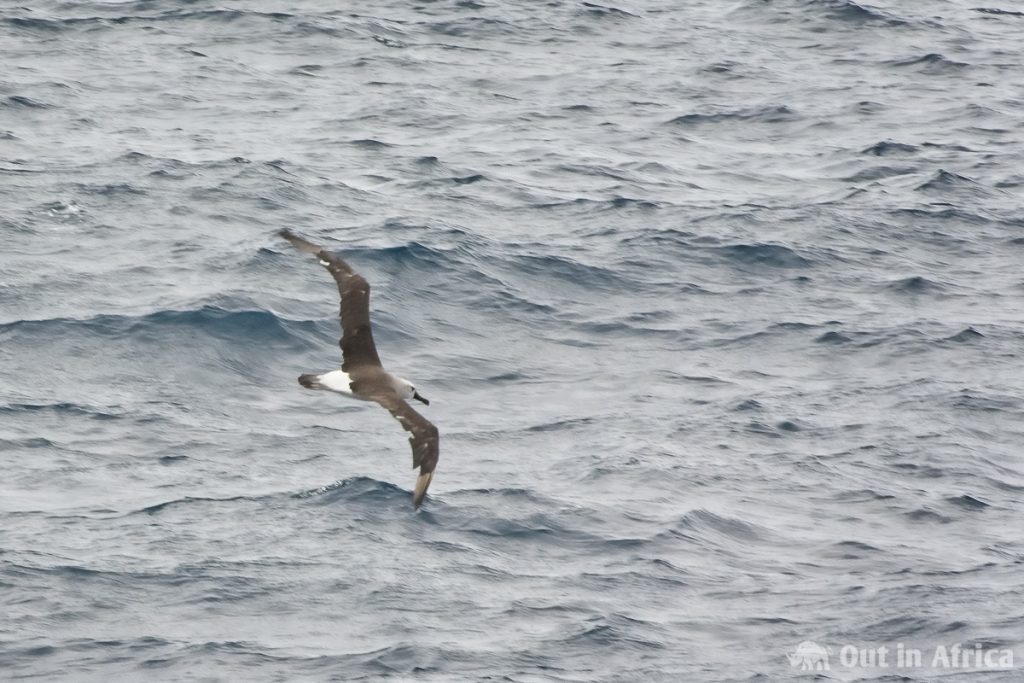
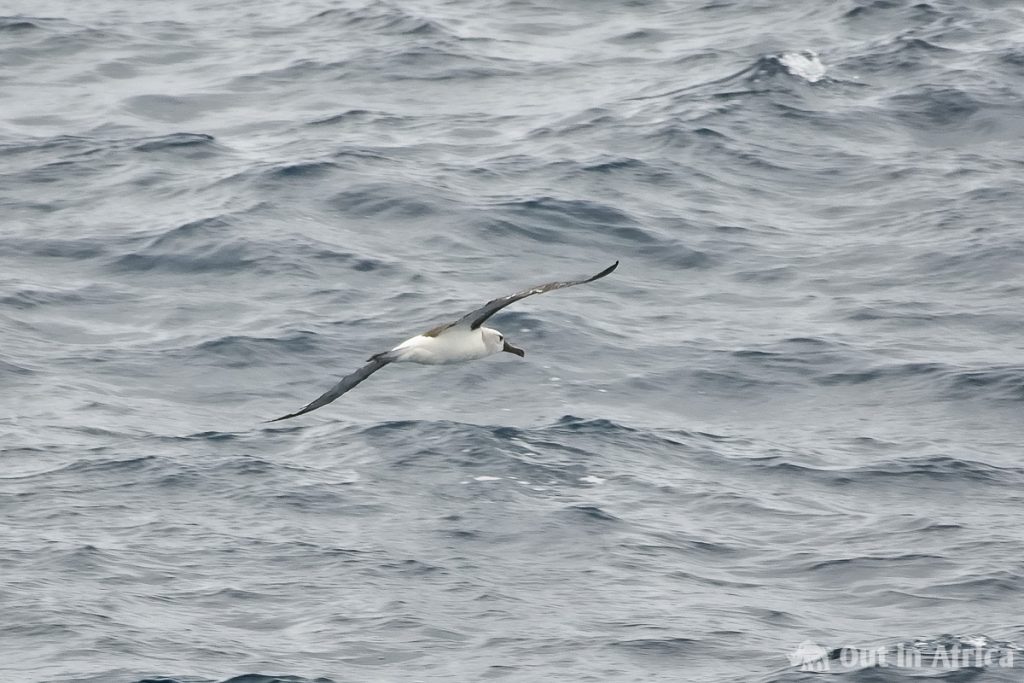
Pierre, in shorts and T-shirt, comes by from time to time, but it always gets too cold for him after a few minutes. If nothing happens, he leaves again.
As we chat, I see a dorsal fin in the water. Very close! It is a dolphin.
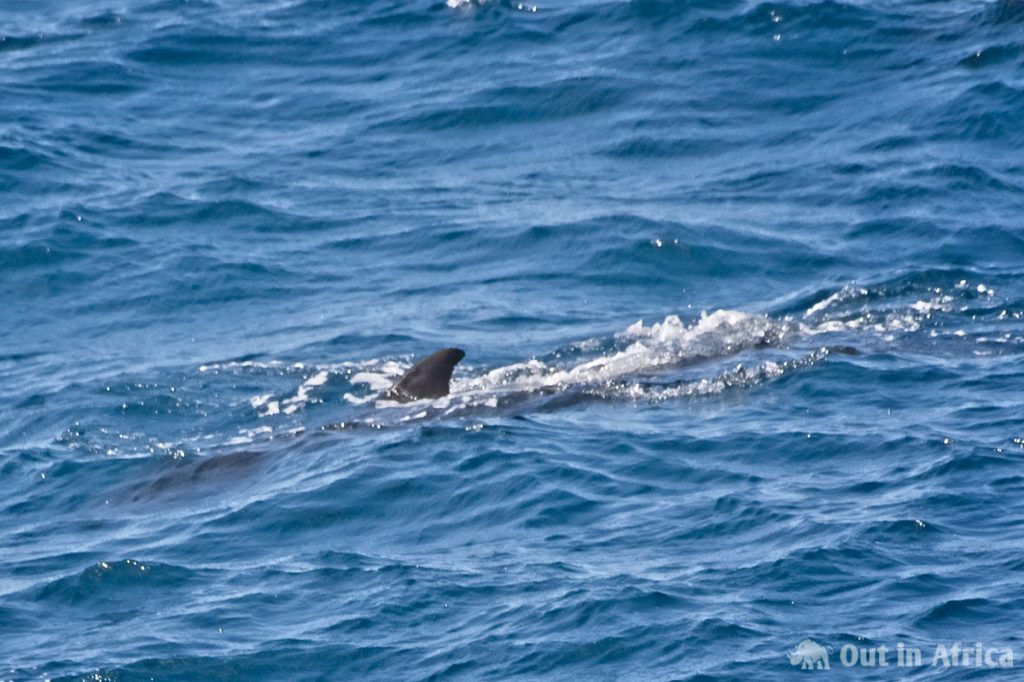
Excited we run to port to see if he comes forward or swims back out of our sight. But we don’t observe the animal anymore.
Pierre stays for a while, but then he gets cold again and disappears through the hatch.
A little later, I see a whole bunch of dolphins, again on the port side. They jump out of the water. I hope they swim to the bow, but they also fall back.
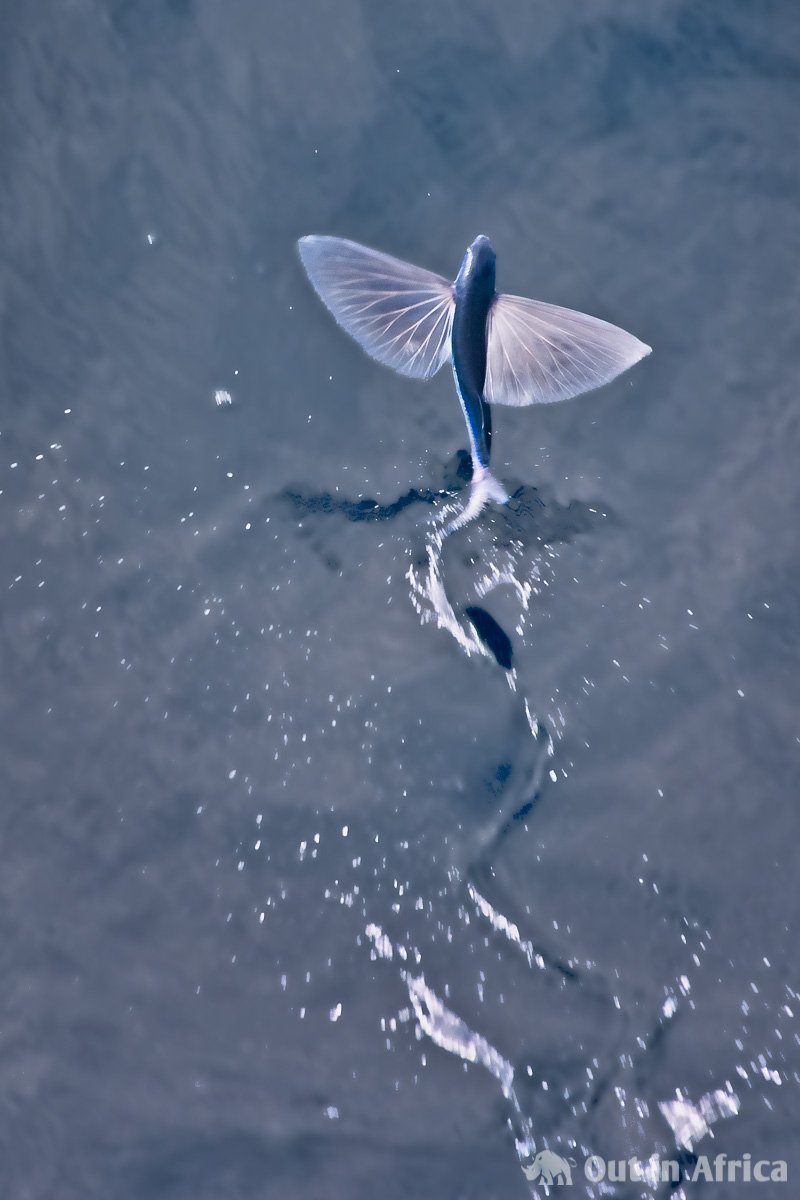
Another hour of nothing follows, interrupted by flying fish or a shearwater.
I see a group of dolphins again, again on the port side. I almost manage to photograph them, and then they disappear from my view again.
With so many dolphins on the port side, I briefly consider whether I should give up the balcony and stand against the railing in the middle of the ship. There I could see the bow wave. Maybe the dolphins prefer to play there? But then I wouldn’t be able to see any flying fish or shearwaters anymore. The railing, from which you could see more dolphins, is on the upper deck, two floors lower. There the view is much more limited.
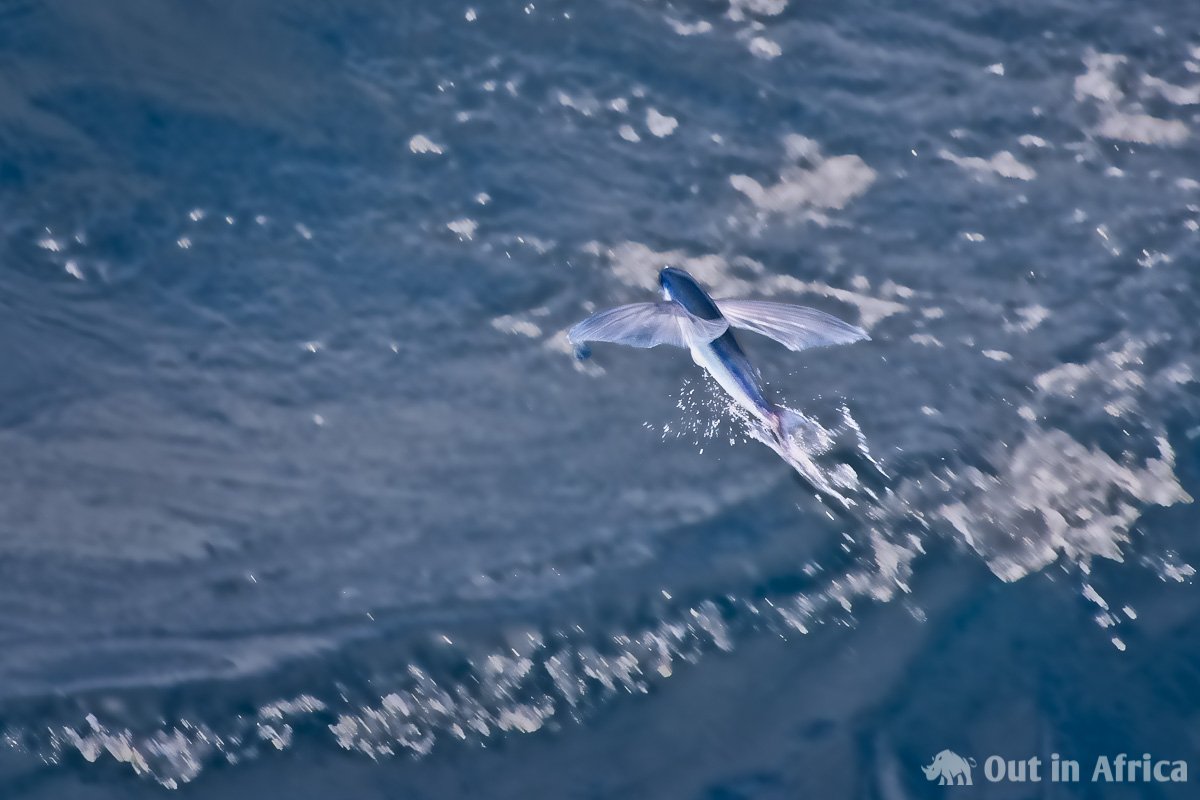
I stay where I am. I am happy because I have seen dolphins three times in a few hours.
After lunch, I am faced with the choice: stay in the cabin and edit photos or go to the bow. It’s sunny, but also very windy and chilly. Then I say to myself: “This is the last day on the open sea. Tomorrow the journey will be over.” I go back to the bow and stay there until dinner.
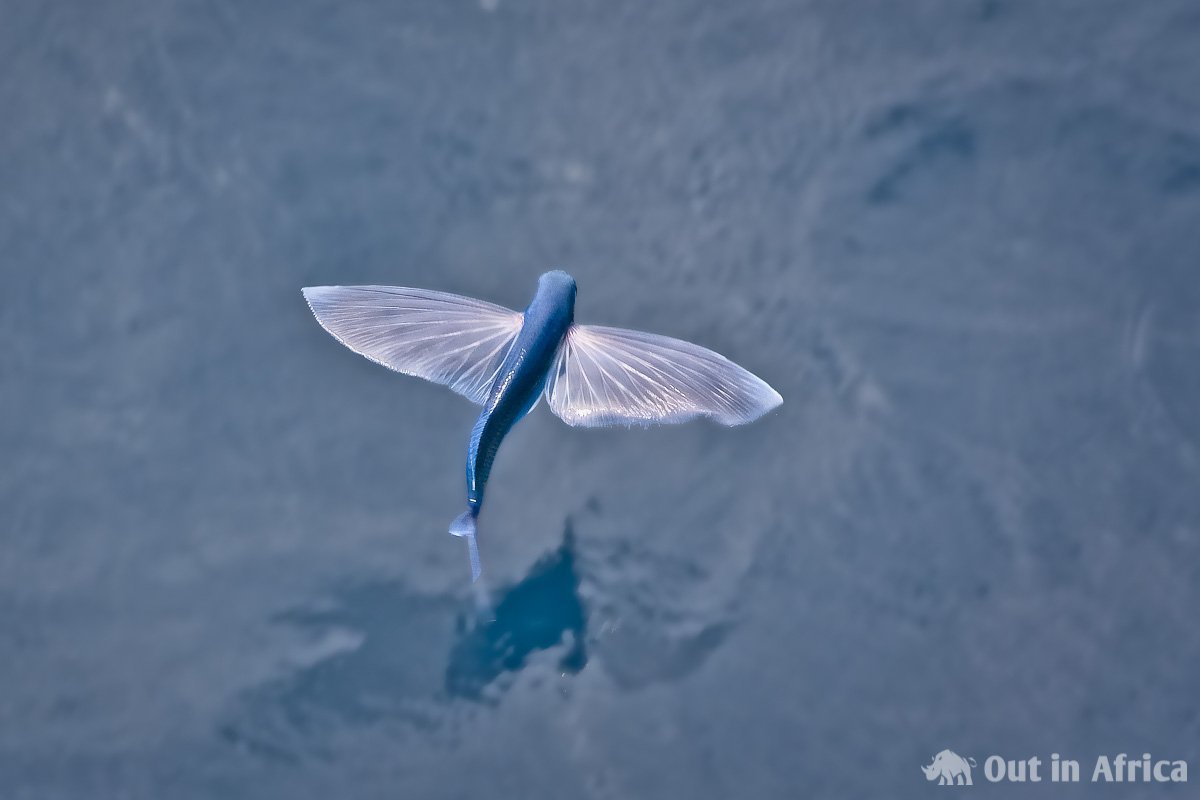
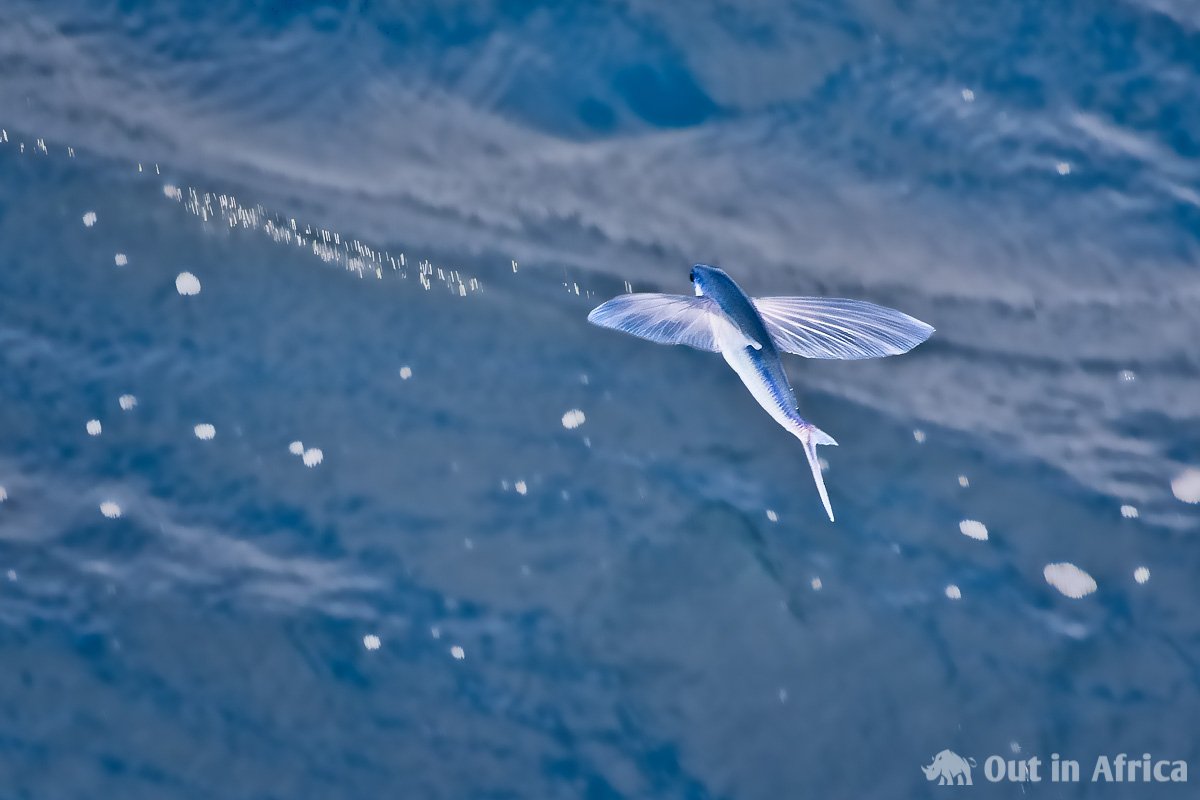
There are no more flying fish. I only see only one, the very last one. Then nothing more. In the meantime, the sea has taken on a bottle-green colour. We drive in the Benguela Current. We are still a good hundred kilometres away from the coast, now at the latitude of Torra Bay, but the sea has changed within an hour.
I miss the flying fish. They have been our constant companions since Dakar. Now they are suddenly gone.
There are more birds instead. And the seascape is still there.
A big brown bird swims on the water. As the ship approaches, it rises. It is a giant petrel with a bizarre beak. It flies very near to the bow as if it wants to show itself to me from all sides. I am happy to photograph it because the question is whether it is a Hall’s Giant-Petrel or a Antarctic Giant-Petrel. Both occur here and look very similar, but the Antarctic Giant Petrel has a greenish beak tip and the Hall’s Giant-Petrel a red one. With my photos, I can answer this question for myself. It is a Antarctic Giant Petrel.
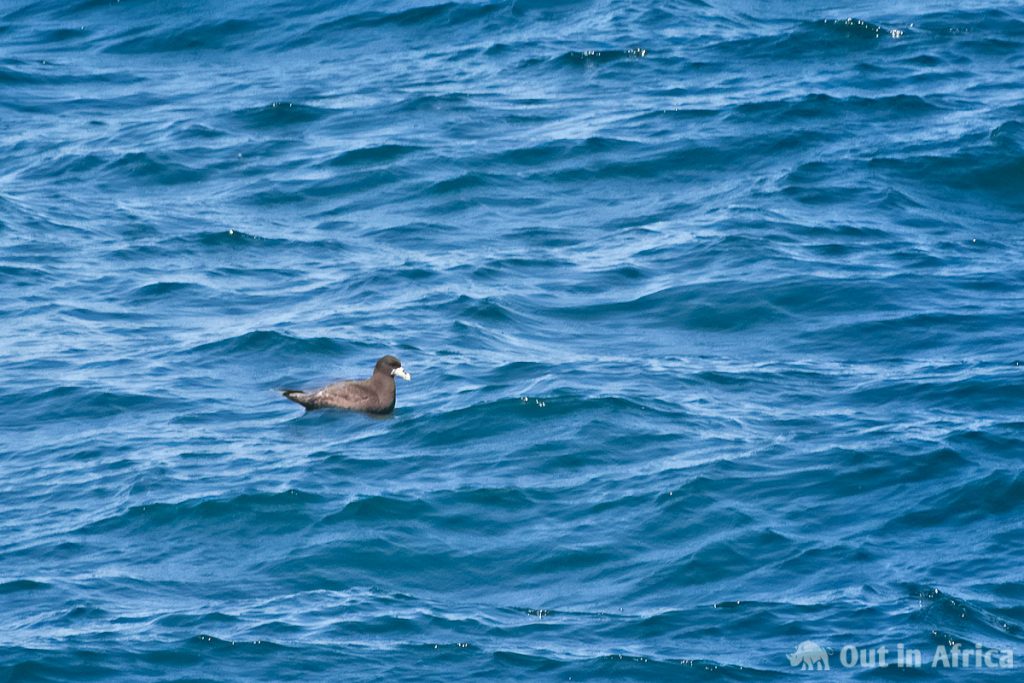
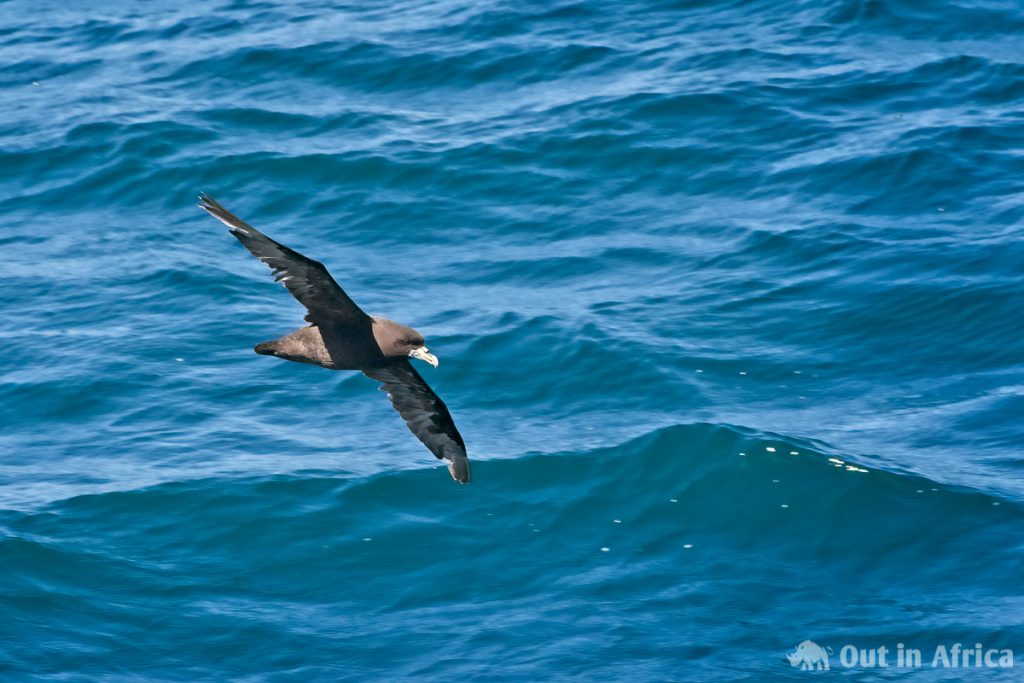
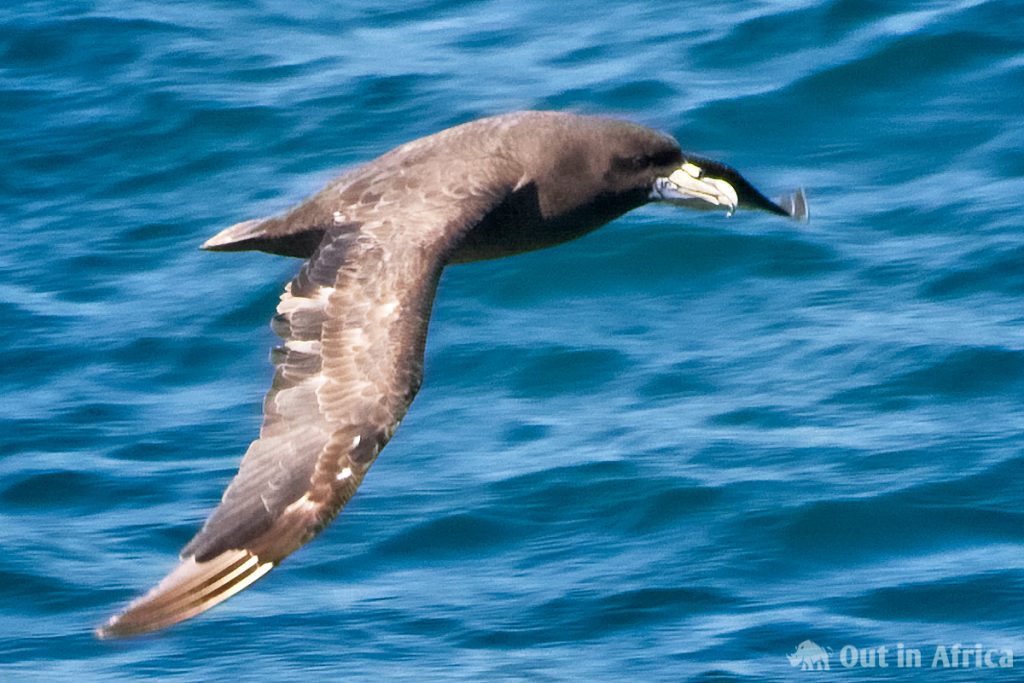

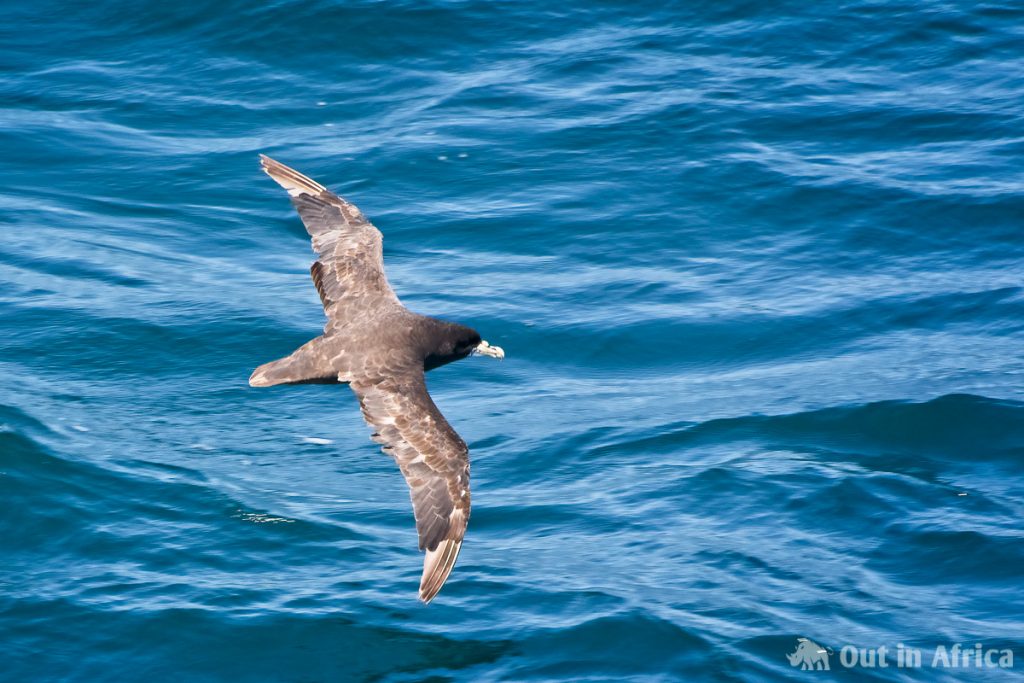
And so that I don’t get bored, Pierre visits me now and then for a few minutes.
There’s also marine traffic. Already in the morning, we met a freighter. Then, in the afternoon, we saw a small boat, but it doesn’t look like a fishing boat. Does Namibia have a coast guard by now?
A ship pushes itself over the horizon. It comes towards us. Pierre and I examine it expertly. Clearly: “General Purpose Freight Ship”, a vessel like the Bright Sky.
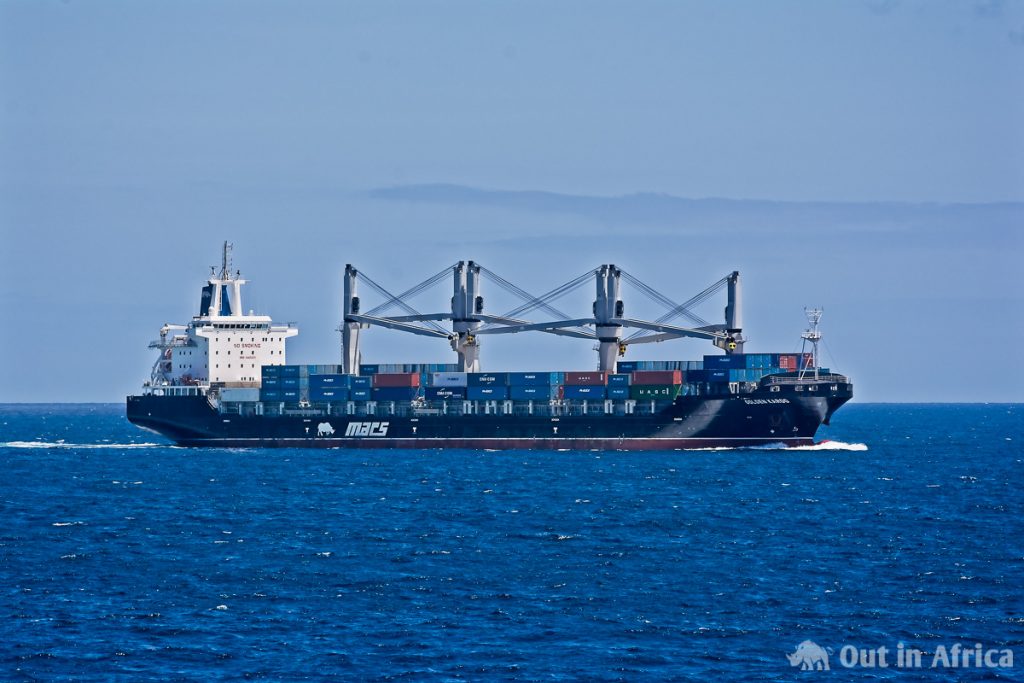
The ship’s getting closer. It has four cranes, just like the Bright Sky. Generally, it looks similar to the Bright Sky, except for the colour. It won’t be one of the sister ships, will it? Together with the Bright Sky, three other vessels were built in 2013.
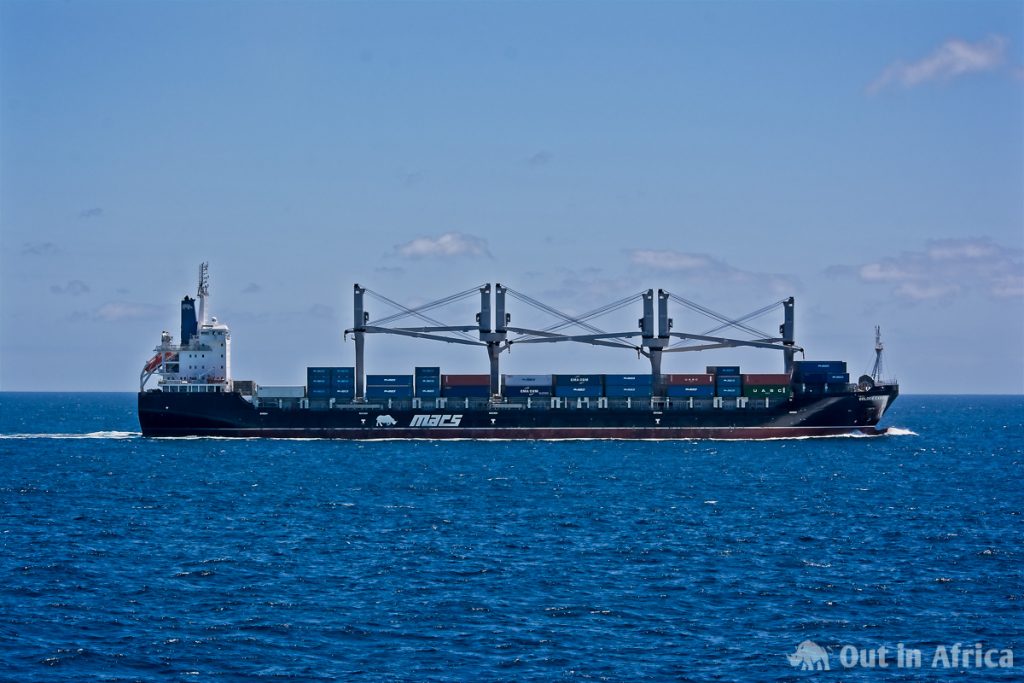
We make up the shipping company’s logo. It is the rhino of MACS, our shipping company. Now, all we have to do is find out the name of the ship. We have no binoculars, but a camera with a telephoto lens. I take a photo of the bow of the other ship and enlarge it on the display. It is the “Golden Karoo“, indeed one of the sister ships.
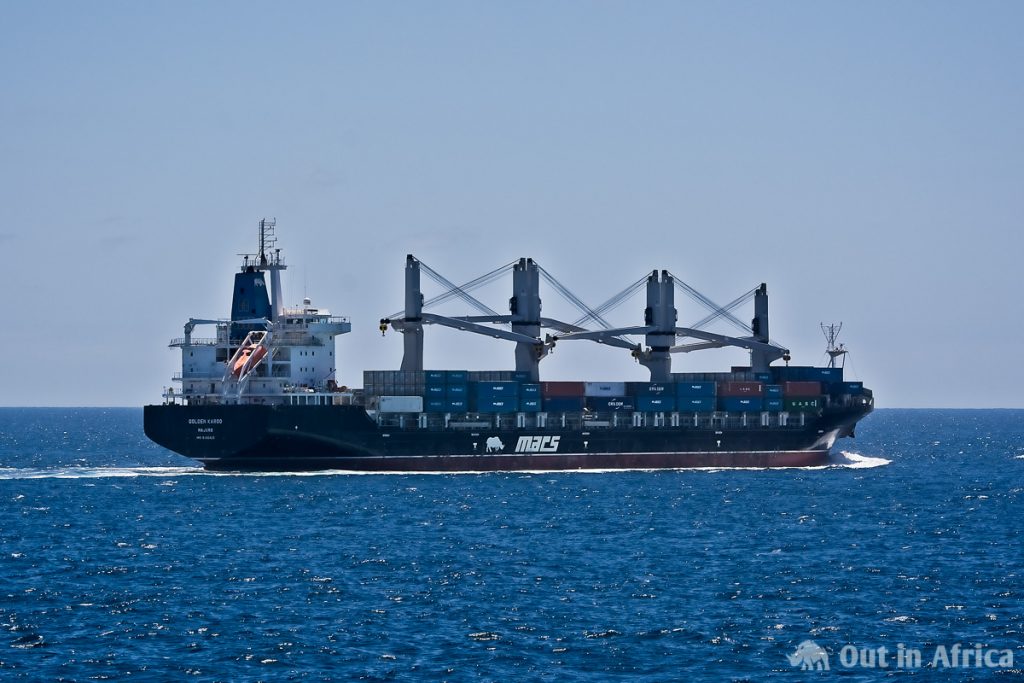
That’s when somebody on our bridge is blowing over a greeting. The horn is ten meters above our heads. Whoa! You can scare your passengers like that. The Golden Karoo blows back.
Yes, that’s how the two sisters meet somewhere in the Atlantic off the coast of Namibia.
I can photograph three more birds. First a Cory’s Shearwater again:
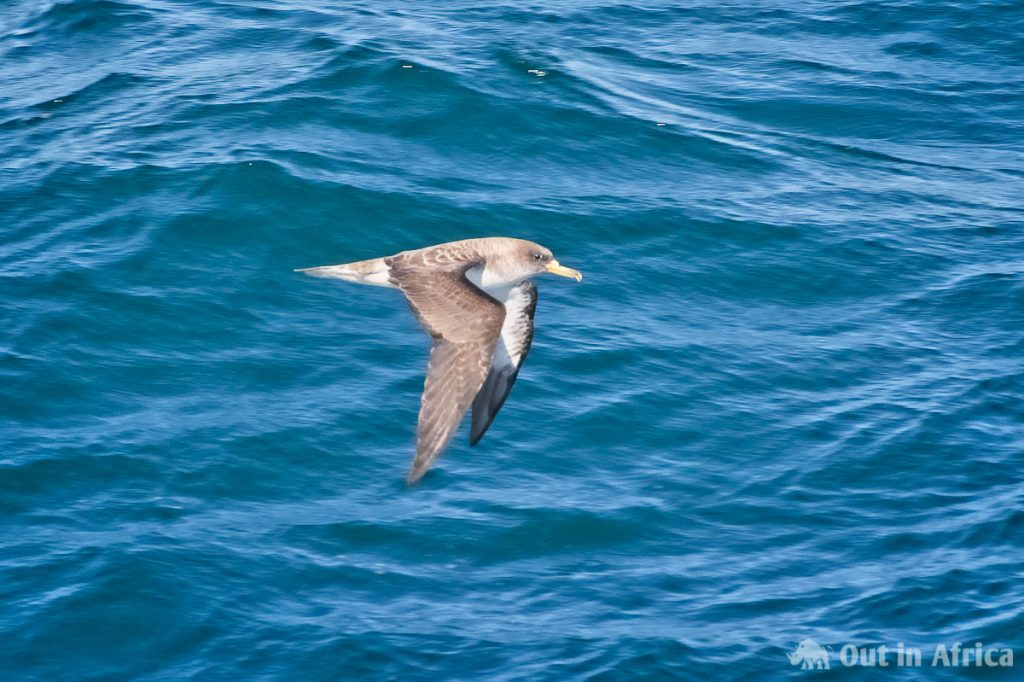
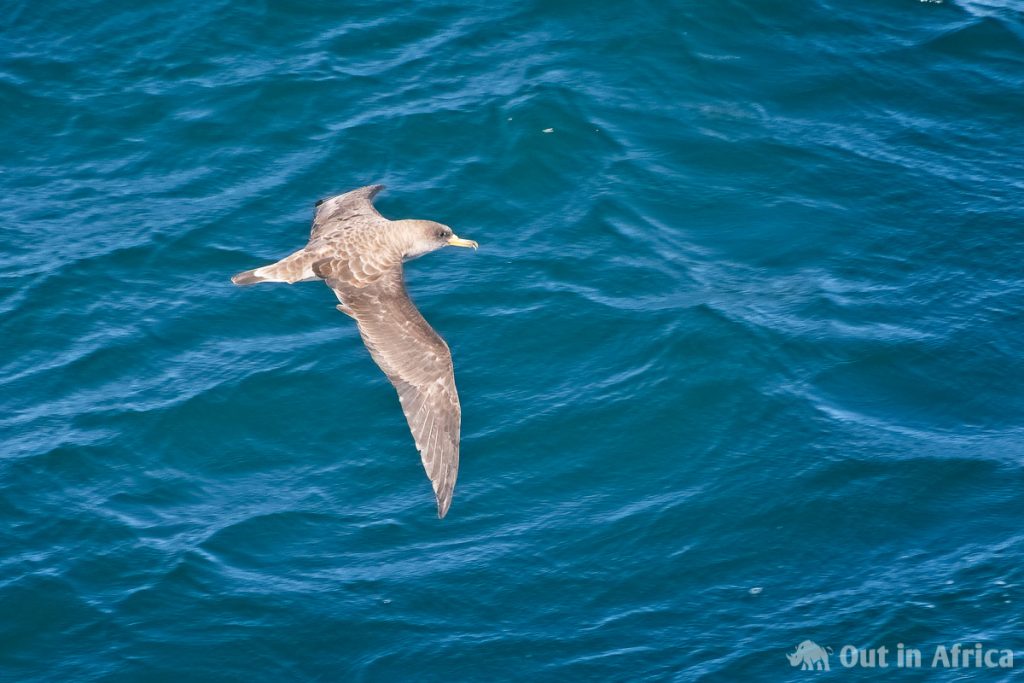
Then I see a Cape Gannet:
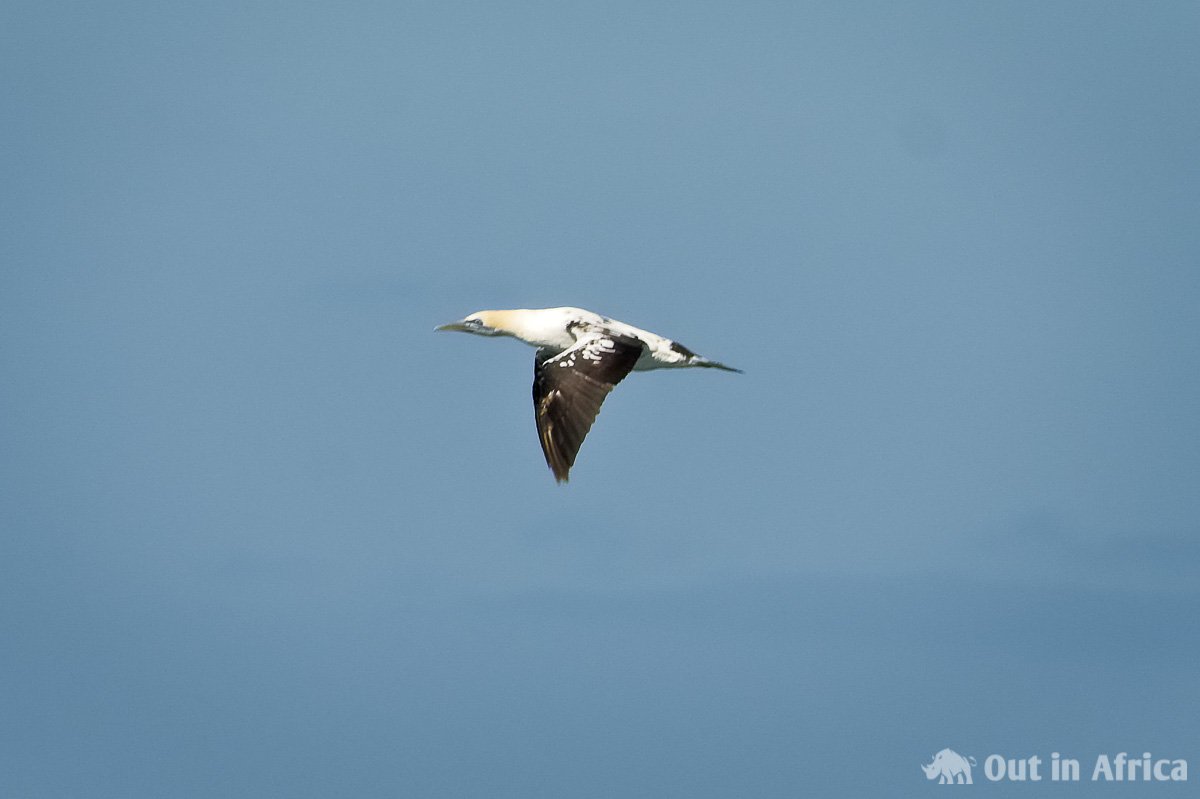
Finally, I manage to take a photo of an Atlantic Yellow Nosed Albatross.
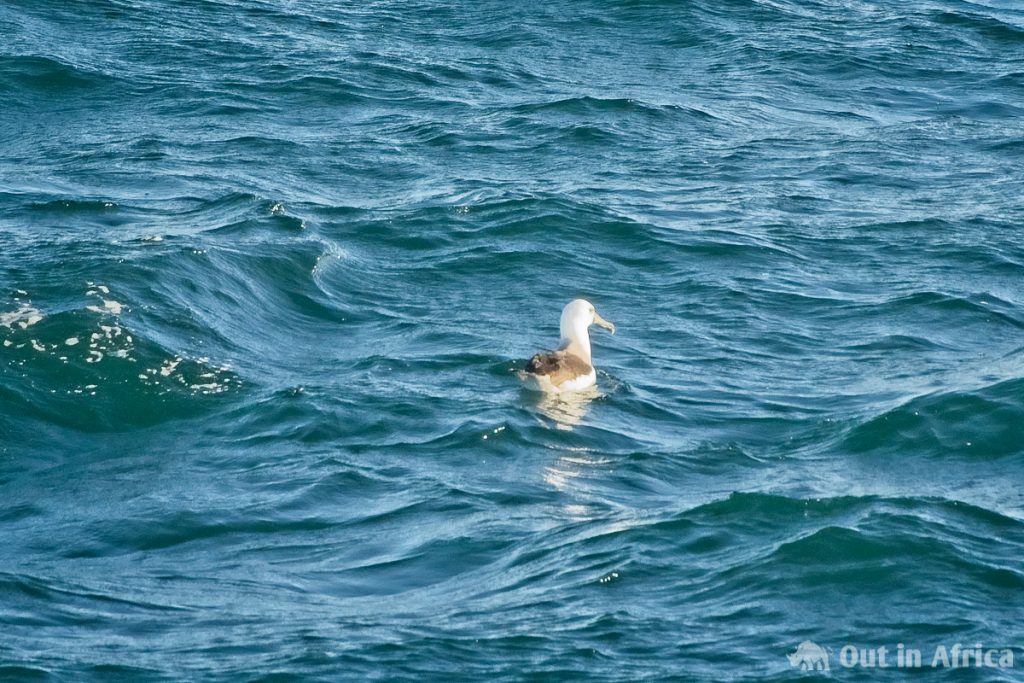
Pierre soon travels on to Madagascar and wants to consume all his supplies of alcohol. At lunch, the captains and we had the last bottle of red wine. Now he still has four bottles of beer, and he wants to share them with me. We sit down at 17:00 on the outside deck of deck D. Pierre spent a lot of time there; I preferred to be at the bow
We drink to each other, and both agree that it was a wonderful trip.
At dinner, the captain apologizes for scaring us so much with the horns. He couldn’t warn us, but that’s the way it should be in seafaring, that you greet each other when you meet a sister.
After dinner, the bottle store is open. I buy a bottle of Polish vodka. In this way, I will have for a while a memento of the Polish sailors and our barbecue together. Every time I drink of it, I will say “Nastrowija”, of course in Polish pronunciation.
For the very last time, I go to the bow. Tomorrow we will be in Walvis Bay. During unloading and loading, the hatch will be closed. It is time to say goodbye to my favourite place on the ship. I spent many hours there and saw beautiful and exciting things and often just looked at the continually changing landscape of the ocean. It makes me sad to leave this place. Once again, I stand at the extreme tip of the ship and fly over the waves.
I say goodbye, climb down the lopsided Chinese ladder one last time and go back to the big house on the ship. It is sunset. I have my appointment on the bridge. I took a photo of the sunrise and sunset every day during the trip. Sometimes it was spectacular, today it is rather sober: the earth turns, and the sun disappears behind the horizon. Only a few clouds of fog get an orange touch.
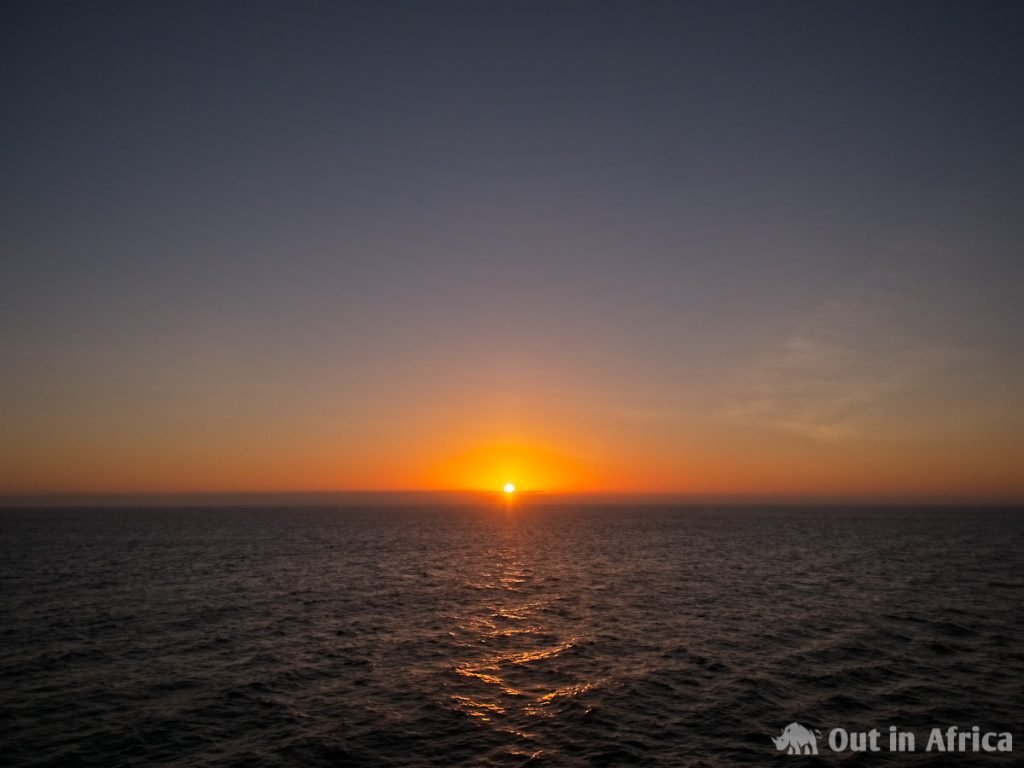
I spend the evening looking at my thousands of flying fish photos. Most of them go to the garbage. But I have several images that I am proud of and a few more that I like.
I look at my app at midnight.
It’s Sunday now. My last full day on the Bright Sky has begun. Our position is S22° 14.374′ E13° 50.605′.
We are already south of Henties Bay, 51 km from Jakkalsputz. Walvis Bay is 103 km away. We will be there in four hours.
Would you like to see an overview of all articles about my journey on the cargo ship Bright Sky? Click here for a table of contents.

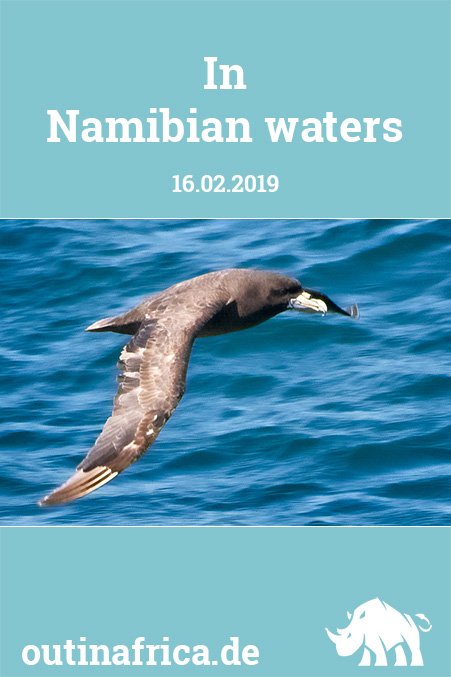

Leave a Reply